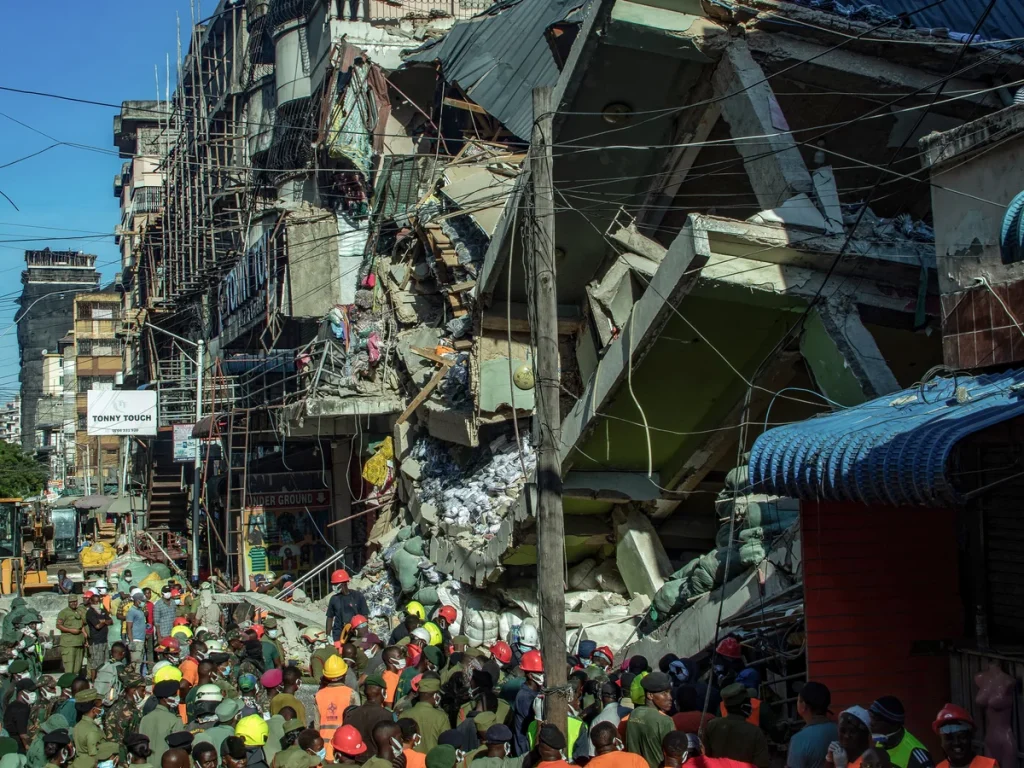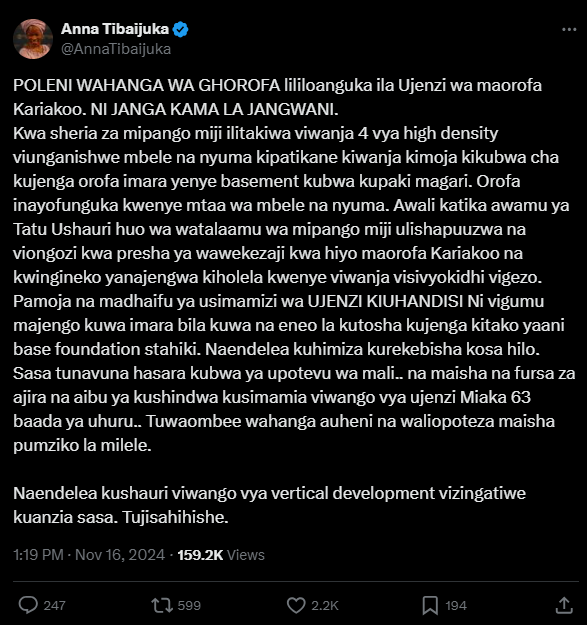Tanzania is no stranger to disasters, but what is most alarming is the repeated failure of its leadership to address the root causes. While some accidents are due to natural factors, the lion’s share are man-made—resulting from shoddy construction, poor infrastructure planning, and political reluctance to act.
From bridge flooding to the tragic collapse of buildings in Kariakoo, the country’s history of disaster management is marred by investigations that lead to no tangible results. This piece dives into the recurring pattern of negligence, the political inertia, and the devastating consequences of failing to put public safety first.
It chronicles some accidents cum disasters that have, time and time again, exposed our leaders’ soft underbelly.
Tanzania’s history of unmitigated disasters and accidents knows no bounds. We seem resigned to leaping from one disaster to another. The causes of most accidents are known, but the political will to do something is lacking.
Floods can be considered natural disasters, but even here, there is a clear lack of commitment to doing the right thing.
Look at bridges, for instance. Do they not bend downwards to follow the water instead of running away from it?
When a fifty-year storm comes calling, are the bridges not submerged in water? The authorities reassured us that the bridge was intact, but the dam had been washed away.
For those stranded and waiting for the water to subside, the rankle tends to be: is this the authorities’ best shot?
Are the infrastructures erected to fail their functionality but retain their structural suitability? Do users care about the structural fitness or functionality of those structures? The only thing users seek is to continue with their journeys uninterrupted.
Tanzania is obsessed with inquiry investigations no sooner an accident happens.
READ RELATED: A Tradition or a Crime? The Legal & Ethical Debate Over Niffer’s Fundraising for Kariakoo Victims
Most of these inquiries are designed to buy time and let public pressure cool off, but rarely is there an intention to use the reports. The Kariakoo multistorey buildings have been investigated since 2006 after the collapse of Chang’ombe Village Inn.
The findings from a probe team hastily formed by the then premier, Edward Lowassa, revealed many shoddy construction works and underhand methods, but the report was never implemented.
Out of 505 tall buildings inspected, 147 were found to have been built without authorization from municipal authorities.
To cover up their tracks, 22 owners of those multistorey buildings did not show up during the inspection. In 2007/08 budgetary proceedings, former Prime Minister Peter Mizengo Pinda decried bogus contractors, but nothing tangible came out.
The Lowassa inquiry committee made straightforward recommendations for demolishing buildings without building permits or constructed below accepted standards.
Lowassa was relieved of his duties and forced to resign as premier for reasons unrelated to the building’s investigative report.
His linchpins claim that if he had been in the office, he would have implemented the recommendations, and builders would have had to think twice before defying procedures.
After assessing his record, accepting this kind of reasoning isn’t easy. He was an MP even after his resignation and could have pushed it in Parliament, but he didn’t.
Was he not the minister for disasters during the Mwinyi administration, and was the Rufiji floods’ assistance not misdirected to the merchants of vagabonds?
Were the tinned fish for the Rufiji flood victims being hawked across the country under his watch? This is a record fraught with inconsistencies.
During the accident of the Precision Air in Bukoba, lives were lost, and there were promises to beef up disaster preparedness all over the country.
This was done by forming vigilante voluntary groups that would receive appropriate training to respond to them. This directive’s performance was partly implemented in Bukoba, but for the rest of the country, nothing tangible was foreseeable!
Fires in Kariakoo are now commonplace, but disaster preparedness is still very flimsy. Our firefighters used the wrong tools when the multistorey building at Kariakoo in Dar es Salaam collapsed.
What was needed most was debris forklifts, which could have cleared the affected area within three to four hours, and excavating around the remaining building to allow aeration and facilitate rescue efforts without being hampered by the debris.
Such equipment was unavailable, and the victims uploaded themselves on social media to plead their case, but to no avail.
By Sunday, the forklifts had not arrived at the site, and some of the victims claimed lack of oxygen, water, and sweltering heat may have killed some of them more than the accident itself.
Regardless of the correctness of the assessment, one thing was clear: certain things keep repeating themselves.
Ministers turned up there but were more like tourists and not problem solvers. The Dar es Salaam Regional commissioner is not new to controversies.
An accident occurred at Precision Air, but it had nothing helpful to contribute beyond suppressing data on casualties and deaths.
The same echoed in the collapse of the Kariakoo building. For him, the issue was that the accident did not inflict much damage. Could the authorities have done more to alleviate the accident?
Prime Minister Majaliwa Kassim ordered oxygen to reach the buried victims, but with debris blocking access to the buried victims, it was unclear how his directive could be implemented.
The rescue efforts taught me that police dogs that can sniff humans were not deployed at the scene. Even both the JKT and JWTZ were missing in action.
However, it was the resilience of commoners that impressed me most. Without enjoying the luxury of shifts, they kept searching for their dear ones and celebrating every time they successfully rescued one victim.
Security forces that used guile, grit, and sleek tactics to suppress and contain freedom of expression and speech went A.W.O.L!
Some buildings that did not have permits somehow managed to secure backdated permits through our unscrupulous government officials!
However, the Lowassa report is more accurate than explicitly showing the said builders did not have their permits at the time of the investigation, so it is an area worth a follow-up.
What is stopping us from demolishing all the buildings that have failed the structural tests and alleviating the recurring problem of man-made accidents?
Are the owners of those buildings too powerful that they are untouchable to the extent human life is expendable? In this case, nothing has been said about the building owner and whether he had the prerequisite building permits.
From a casual inspection, I saw concrete and steel reinforcements insufficient to withstand the structure’s imposed dead weight.
There is also another dimension to the fracas. From Professor Anne Tibaijuka’s X account, there are a lot of gems to unearth.
She was the urban settlement minister during the administration’s third phase under former president Jakaya Kikwete.
Her opinions matter. She opined that past evaluation exercises during her helm at the ministry, high-rise buildings at Kariakoo revealed that the base area was too narrow to support the structures.
In her own words, that was a major source of Kariakoo tall buildings posing a constant threat to human lives that use them apart from shoddy designs and construction supervision.
She counselled that those reports ought to be revisited and appropriate measures taken lest more people be killed or maimed from preventable accidents.
Political reluctance to order demolition is what keeps one of our loved ones at constant risk of death or disability. The advantage of demolitions extends to shaping attitudes and behaviours.
After over 200 tall buildings at Kariakoo have been banned for use and all the renters removed, that will go some way to deter future gross misconduct.
After all legal challenges have been exhausted, demolition will indelibly teach us an unforgettable lesson: play according to the rules or face the music.


